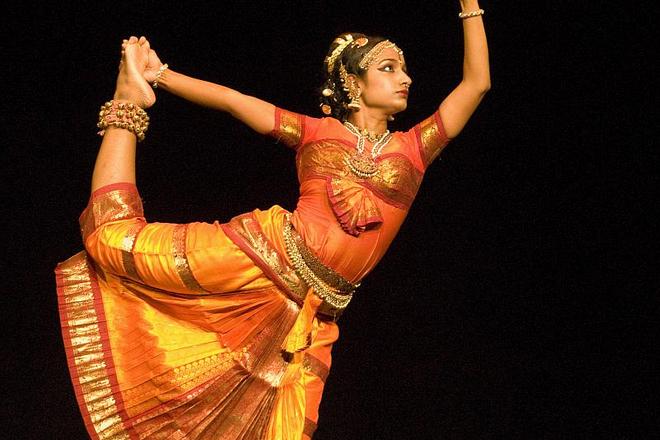QUITE different but still with some essential similarities: the cultures and traditions of India and Slovakia reveal some common points and several interesting facets that are attractive to people of both countries. Traditional genres that attract Slovak audiences are Indian classical and folk dances, classical-folk and pop music and movies, especially the renowned “Bollywood-style” production. But other aspects are popular as well: traditional yoga and Ayurveda and, of course, Indian cuisine, well-appreciated by many Slovaks.
Several Indian dance events have been offered in Slovakia in recent years such as a performance by the Mohiniattam Dance Troupe led by Deepti Omchery Bhalla in Bratislava and Banská Bystrica, a visit by the Kathak Dance Troupe led by Vaswati Misra in Bratislava and Žilina, the Kuchipudi Dance Troupe led by Yamini Reddy in Bratislava, and most recently a contemporary dance troupe led by Priyadarshini Shome performing in Bratislava in February.
Folk dances from the Indian states of Punjab, Rajasthan and Orissa were also recently organised, the Indian Embassy in Slovakia told The Slovak Spectator, and an Indian classical Kuchipudi dance performance is planned for autumn 2011. In Košice, the Gauranga Festival 2011 was held on June 16 at the city’s Lower Gate, offering classical Bharata Natyam Indian dance demonstrations, Kirtan and Bhajan traditional songs and mantras, Indian literature and traditional cuisine.
Indian musicians from the Abhijit Banerjee Trio let Slovaks sample the flavour of a unique combination of ancient tradition and modern jazz – also mixed with Roma folk music – at their concert during the One Day Jazz Festival on March 22 in Bratislava. Their visit to Slovakia included, apart from this biggest gig, a concert in Piešťany, two public discussions with musicians in Bratislava and Piešťany and a screening of a documentary about Indian classical music, its masters and its instruments – like the sarode, ghatam, tabla and others.
The evident mutual interest and fascination in each other’s culture, lifestyles and traditions is reflected as well in the Slovak-Indian Friendship Society (Spoločnosť slovensko-indického priateľstva) that has organised, among other events, the Multi-Kulti Festival, supported by the Indian Embassy. Multi-Kulti, as its name might imply, offered various kinds of discussions about culture, exploring issues like religious diversity, funeral traditions, lifestyle heritage, ecology, ancient civilisations and their influences, as well as about Roma living in Slovakia and their co-existence with the majority society. It toured Slovakia’s major cities like Prešov as well as smaller towns such as Snina (where it took place in a Roma community centre), Holíč, Skalica, Štúrovo, Detva, Sereď, Stará Ľubovňa, and Piešťany. In addition to the discussions, participants could listen to lectures, watch movies – both feature films and documentaries – see a staged version of the Ramajana legend, go to dance performances and fashion shows, listen to concerts and presentations about books, try yoga and meditation, and taste traditional Indian cuisine with the aim of opening all one’s senses to another culture.
R. K. Puri, counsellor of the Indian Embassy told The Slovak Spectator that Slovak spa and wellness traditions have many similarities with the traditional Indian Ayurvedic system of treatment and the two offer a potential for business synergies.
In addition to these events focused on Indian culture, several Indian performers took part in other events such as actor Sanal, who participated in the ERROR 2010 “festival of theatres of the homeless”, and dancer Bhakti Dévi, at a meeting on spiritual development. An inextricable part of Indian tradition and daily life is its cuisine, much valued and enjoyed in Slovakia, as the country has quite a large number of Indian restaurants for its small size.



 Yamini Reddy (source: J. Liptáková)
Yamini Reddy (source: J. Liptáková)